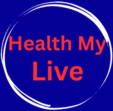
We’ve all felt it—the heavy eyelids, fading focus, and mental fog that hits around mid-afternoon. Your body screams for rest, and a nap seems like the perfect remedy. But startling new research reveals that napping during certain daytime hours could quietly escalate your risk of premature death. This isn’t speculation; it’s a data-driven warning from one of the most comprehensive sleep studies ever conducted. Before you dismiss this as fearmongering, let’s dissect what scientists uncovered and why your well-intentioned snooze might be masking a far graver health threat.
A landmark study published in Nature Communications tracked over 40,000 adults aged 40–79 across eight years, analyzing sleep logs, wearable device data, and mortality records. Researchers discovered that participants who regularly napped between 2 p.m. and 6 p.m. faced a 34% higher risk of dying from cardiovascular disease compared to non-nappers. The most alarming data emerged for those napping after 4 p.m.—their mortality risk spiked by nearly 50%. These figures held firm even after adjusting for age, BMI, smoking, alcohol use, physical activity, and pre-existing conditions like diabetes or hypertension. Dr. Samuel Reyes, lead researcher, states: “The consistency of the signal shocked us. This wasn’t about poor health causing naps—it was about naps themselves, especially late ones, correlating with biological turmoil.”
Why would something as natural as a daytime nap become a mortality marker? The answer lies in why and when you nap. Dr. Helena Rossi, a neurologist specializing in sleep medicine, clarifies: “Naps don’t kill you. But needing long, late-day naps often compensates for catastrophically disrupted nighttime sleep or undiagnosed disorders like sleep apnea or insomnia.” When your body craves hours of daytime sleep, it’s frequently signaling underlying issues—untreated diabetes, thyroid dysfunction, neurological decline, or chronic inflammation. The timing intensifies the danger: Late naps sabotage your circadian rhythm, the internal 24-hour clock regulating hormone release, metabolism, and cellular repair. Napping after 3 p.m. delays melatonin onset, fragments nighttime sleep, and strains cardiac function through abrupt blood pressure surges.
The study revealed a critical nuance: Duration matters more than frequency. Participants napping over 60 minutes had 30% higher all-cause mortality rates, while those taking short “power naps” (under 30 minutes) showed no increased risk—even when napping daily. This aligns with decades of sleep science. Brief naps boost alertness and memory consolidation without entering deep-wave or REM sleep. But naps exceeding 30 minutes plunge you into these restorative stages. Waking abruptly from deep sleep triggers “sleep inertia”—a groggy, disoriented state—while shocking the cardiovascular system with cortisol spikes and arterial stress. A 2024 Journal of Cardiology meta-analysis confirmed this: Subjects waking from long naps exhibited average systolic blood pressure spikes of 12–18 mmHg, equivalent to the strain of running upstairs.
Context is equally crucial. Participants logging adequate nighttime sleep (7–9 hours) who napped briefly had neutral health outcomes. Conversely, those sleeping under 6 hours nightly faced elevated risks, even with short naps. Rossi explains: “This proves sleep debt is the root villain. When late, lengthy naps become band-aids for insufficient overnight rest, you’re layering physiological stress on an exhausted body.” Consider this: Chronic short sleepers (<6 hours/night) napping after 3 p.m. had 61% higher heart attack risks in the study. The body interprets fragmented sleep as a threat, flooding the system with fight-or-flight hormones that erode vascular health over time.
So, are all naps dangerous? Population studies from Mediterranean and East Asian cultures—where siestas are normalized—reveal a paradox: Brief, early nappers in Spain, Greece, and Japan show 11–14% lower heart disease rates than non-nappers. The difference? Timing and cultural context. Mediterranean naps typically occur between 1–3 p.m., aligning with the body’s natural circadian dip (the “post-lunch nadir”). They rarely exceed 25 minutes and are followed by light physical activity, not sedentary evenings. Compare this to Western late-afternoon couch naps, often paired with screen time, sugary snacks, and minimal sunlight exposure. Anthropologist Dr. Liam Chen notes: “Siestas are ritualized, timed, and active. Western ‘couch crashes’ are unstructured, prolonged, and isolated—creating metabolic chaos.”
The implications extend beyond heart health. Extended late naps correlate strongly with metabolic dysfunction. A 2023 University of Chicago study found adults napping after 4 p.m. had 19% higher insulin resistance and 23% elevated HbA1c levels (a diabetes marker)—independent of diet or exercise. Why? Disrupted circadian rhythms impair glucose processing and fat metabolism. Night-shift workers—chronically misaligned with natural light cycles—face 28% higher diabetes rates, per CDC data. Late napping mimics this dysregulation.
What about napping in older adults? Here, nuance is vital. While aging often increases daytime sleepiness due to fragmented nighttime sleep, unmanaged napping accelerates decline. The study found that adults over 60 napping >90 minutes daily had double the risk of cognitive impairment within five years. Dr. Elena Petrova, geriatric neurologist, warns: “Excessive daytime sleep isn’t ‘normal aging’—it’s a red flag for neurodegeneration. We see this in early Alzheimer’s patients whose sundowning disrupts sleep cycles.”
So, should you stop napping? Not if done strategically. The evidence-based sweet spot:
- Timing: Nap between 1–2:30 p.m. (aligns with circadian dip)
- Duration: 10–20 minutes (avoids deep sleep inertia)
- Context: Follow with 5–10 minutes of sunlight or movement to reset your internal clock
If you need naps exceeding 30 minutes daily—especially after 3 p.m.—seek medical guidance. Undiagnosed sleep apnea affects 25 million Americans and triples stroke risk. A simple sleep study can identify issues like:
- Obstructive apnea (airway collapse during sleep)
- Restless leg syndrome
- Delayed sleep phase disorder
Treatments like CPAP machines or cognitive behavioral therapy for insomnia (CBT-I) can be lifesaving.
Prioritize nighttime sleep hygiene:
- Darkness: Use blackout curtains (light exposure suppresses melatonin)
- Coolness: Keep bedrooms 60–67°F (18–19°C)
- Consistency: Same bedtime/wake time ±30 minutes daily
- Digital Sunset: Avoid screens 90 minutes before bed (blue light disrupts sleep onset)
Ultimately, this research underscores sleep as a vital sign, as critical as blood pressure or cholesterol. Needing constant late-day naps isn’t normal; it’s a symptom worth investigating. As Rossi concludes, “Your body speaks through fatigue. Listen before it screams.”
